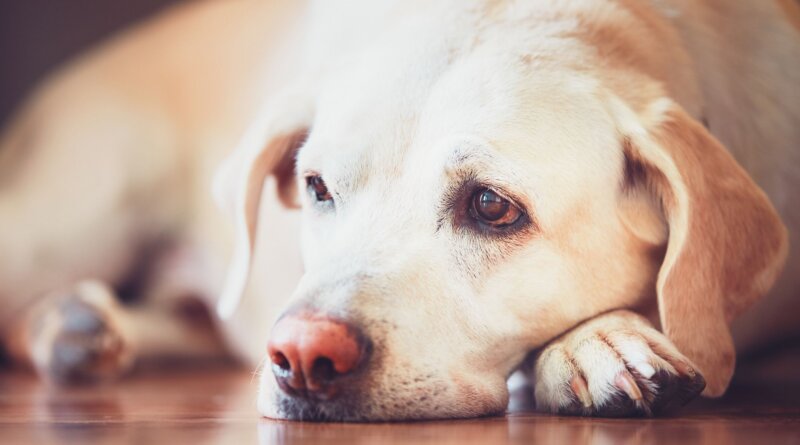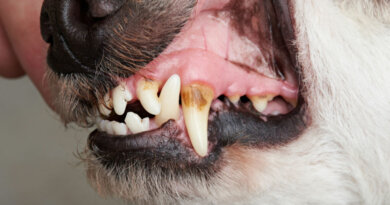How to Tell If a Dog Is Depressed
Signs your dog is depressed can be subtle, often starting with a gradual loss of interest in once-loved games, a few extra naps, and a declining appetite. Depression in dogs also can start with a bang, such as finding a previously outgoing and well-mannered dog hiding in the closet, ripping up shoes, or growling at old friends.
How to Tell If Your Dog Is Depressed
When it comes to depressed dogs, the signs vary, but depression in dogs typically involves a significant behavioral change. Some of the more common signs include:
- Lethargy/sleeping more
- Lack of interest in preferred activities/toys
- Unwilling to socialize
- Short tempered
- Lack of appetite
- Increase in destructive behavior
- Hiding
- Increased anxiety/clinging to owner
Causes of Canine Depression
Much of the time, depression in dogs can be linked to an event or experience. Perhaps one of the most common triggers is big changes in routine such as moving to a new home or an owner switching from day shift to night shift. Bringing new members into the family—like the arrival of a puppy, a significant other moving in, or a baby being born—can be a problem spot as well. The potential for depression isn’t a reason to avoid these kinds of life events, but it should certainly be motivation to consider how best to help your dog adapt when they are occurring.
Dogs also can become depressed following the loss of a family member, whether human or canine, or any regular companion. They can and do experience grief and grief-related depression. It takes time for them to work through the loss and develop a new routine. In addition, they are often faced with how to handle the grief their owners are likely going through at the same time.
The most serious instances of depression in dogs often come from cases where the animal has experienced trauma, abuse, or extended isolation. Shutting out the world can be a survival strategy in these extremes and can carry over even when the dog has been removed from the environment that caused the trauma. Building trust with the dog and seeking expert advice are extremely important when working with an animal whose depression likely stemmed from a deeply traumatic experience.
Caring for a Depressed Dog
Chronic pain and illness can go hand-in-hand with depression in dogs, so your veterinarian is an essential part of diagnosis and treatment plans for dogs suffering from depression. Your vet will explore potential physiological causes which can lead to your dog becoming depressed or exhibiting symptoms similar to depression. Of course, if something is discovered during the exam, the primary treatment will be to first resolve the underlying issue.
If physiological reasons for the dog’s depression are ruled out, look at your dog’s daily life and be sure the basics are in place:
- Do you have an established routine for your dog? Consistency can play a big role in a dog’s sense of security, especially if there has recently been a big change in their lives.
- Is your dog’s diet suitable for his activity level and health needs? Things like food allergies can affect mood and behavior. If you switched foods or added something new to your dog’s diet around the time they began showing signs of depression, consider returning to the previous diet.
- Is your dog getting enough exercise and attention from you? Getting up and moving can help the dog to reengage with his environment as well as stimulating his appetite. If your dog likes being groomed, take some extra time to brush him out. If there is a game or toy your dog has previously enjoyed, offer opportunities to play.
- Does your dog have friends? If your dog is in a good place to socialize, it may be helpful to meet for a playdate with friends. A few words of caution here: If your dog actively avoids interacting or is showing signs of aggression (including just being unusually grumpy) and/or anxiety, this is not the right time for socialization. As an example, a dog who is depressed following the loss of a companion may be lonely and desperate for the company of familiar dogs. Meeting more often with friends may be just what they need to start feeling better. On the flip side, a dog who is depressed following a traumatic experience may feel uncomfortable and unsafe even around animals they know. This could put them in a situation where they lash out to protect themselves or cause them to retreat further. Pay attention to what your dog is telling you about what they need. If you’re feeling stuck, don’t hesitate to reach out to a vet or behaviorist for advice.
- Training also can be a good way to promote engagement. If your dog is willing, take some time each day to go over simple commands you know they’ve mastered. Celebrate even small successes, whether their performance is up to their usual standard or not. Go ahead and add in some new tricks, games, or activities. Engage your dog’s mind.
The trick with all the options above is to not force your dog to engage. If he doesn’t want to play or shies away from the brush, put it away and try again tomorrow. While it can be difficult to have patience when you can clearly see your dog is struggling, it is important not to overwhelm them. The caveat to this is that depression is not a get-out-of-jail-free card. Continue to correct inappropriate behavior as you normally would. Calm consistency is key.
Medication as an Option for Canine Depression
In some cases, no amount of exercise, routine, and attention is enough to alleviate the condition.
With long-term exposure to stressors, or difficulty lifting the dog out of depression, additional support may be necessary. A variety of medications are available to address symptoms of depression and anxiety in dogs. If you think it might be time to go that route, talk to your vet about which medication might be appropriate for your dog and best fit your overall treatment strategy.
The primary goal when working with a dog suffering from depression is to stay patient, calm, and consistent. There is no immediate fix for emotions. Rather, it is a day-by-day process of ensuring your dog has what he needs to move through it. A good, established routine and some extra TLC can go a long way. Also, keeping your vet appraised of how your dog is doing is important for determining if further care is needed.




